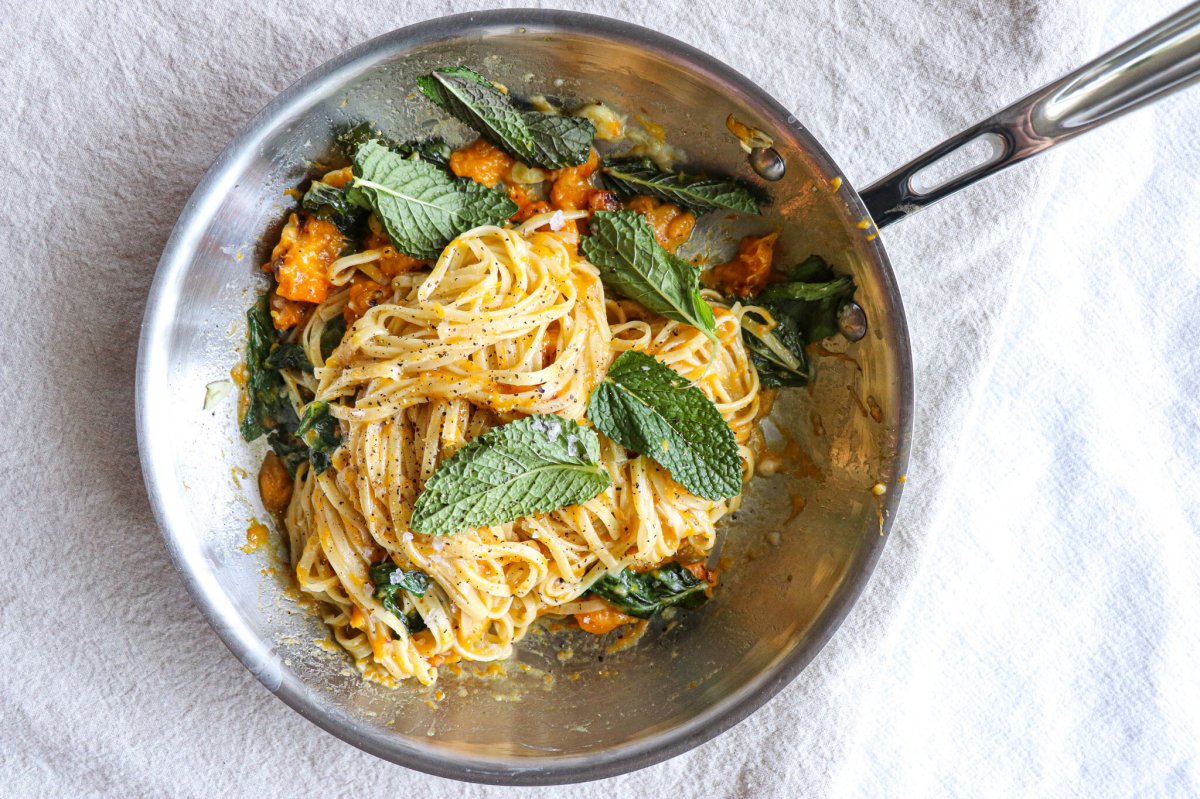Imagine a pasta night transformed: vibrant, creamy sauces cascading over perfectly cooked pasta, each bite a symphony of flavor, all without a single dairy product in sight. This isn’t a dream; it’s the delicious reality achievable with this guide to crafting rich, dairy-free pasta sauces. We’ll explore diverse creamy bases – from velvety cashew cream to luscious coconut cream – unlocking the secrets to achieving textures and tastes that rival traditional dairy-laden counterparts. Prepare to elevate your pasta nights to new heights of culinary creativity and satisfaction.
We’ll delve into three distinct flavor profiles – sun-drenched tomato, fragrant pesto, and earthy mushroom – providing step-by-step recipes that are both simple to follow and incredibly rewarding. Learn the art of thickening your sauces to perfection using various plant-based agents, ensuring a consistently delightful mouthfeel. Discover adaptable recipes, allowing you to customize your sauces to your exact preferences, catering to dietary restrictions and personal tastes. Finally, we’ll finish with elegant serving suggestions, transforming your pasta creations into visually stunning masterpieces.
Flavor Profiles for Dairy-Free Pasta Sauces

Dairy-free pasta sauces offer a world of flavor possibilities, allowing for both familiar comfort and exciting culinary adventures. By cleverly employing plant-based ingredients, we can achieve rich textures and complex flavor profiles that rival their dairy-containing counterparts. This section explores three distinct dairy-free sauce recipes, highlighting the key flavor components and their harmonious relationship with pasta.
Tomato-Based Dairy-Free Arrabiata Sauce
This vibrant sauce captures the essence of classic Arrabiata, delivering a fiery kick balanced by sweet tomatoes and fragrant herbs. The key is to build layers of flavor, starting with a robust base and adding depth with each ingredient.
- Sauté 2 cloves of minced garlic in 2 tablespoons of olive oil until fragrant, about 30 seconds. The garlic should be lightly golden, releasing its pungent aroma.
- Add 1 (28-ounce) can of crushed tomatoes, 1 teaspoon of red pepper flakes, and 1/2 teaspoon of dried oregano. Stir well to combine, ensuring the red pepper flakes are evenly distributed.
- Simmer the sauce over low heat for at least 15 minutes, stirring occasionally. This allows the flavors to meld and deepen, creating a rich, complex taste.
- Stir in 1/4 cup of chopped fresh basil just before serving. The basil adds a fresh, herbaceous note that contrasts beautifully with the spicy tomato base.
The final sauce is a deep crimson red, thick yet vibrant, with flecks of green basil throughout. Its consistency is perfect for coating pasta, clinging beautifully to each strand. The flavor is a delightful dance between sweet, spicy, and herbaceous, creating a harmonious balance.
Creamy Dairy-Free Pesto Sauce
This pesto avoids traditional cheese by using nutritional yeast for a nutty, cheesy flavor and cashews for creaminess. The result is a vibrant, richly flavored sauce that’s both healthy and delicious.
- Combine 1 cup of packed fresh basil leaves, 1/2 cup of raw cashews (soaked in hot water for at least 30 minutes to soften), 1/4 cup of nutritional yeast, 2 cloves of garlic, 1/4 cup of olive oil, and the juice of 1/2 a lemon in a food processor. The ingredients should be thoroughly combined for a smooth and consistent texture.
- Process until completely smooth, adding more olive oil if needed to reach your desired consistency. A smooth, emulsified texture is key to a luxurious pesto.
- Season with salt and pepper to taste. A pinch of salt enhances the flavors, while pepper adds a subtle warmth.
The finished sauce is a vibrant, deep green, almost emerald in its intensity. Its texture is luxuriously smooth and creamy, a testament to the soaked cashews. The flavor is intensely herbaceous, with a nutty undertone from the nutritional yeast that mimics the richness of cheese.
Creamy Dairy-Free Mushroom Sauce
This sauce utilizes the natural earthiness of mushrooms and the creaminess of coconut milk to create a decadent, yet dairy-free, experience. The subtle sweetness of the mushrooms complements the richness of the coconut milk beautifully.
- Sauté 1 pound of sliced mushrooms (cremini, shiitake, or a mix) in 2 tablespoons of olive oil until golden brown and tender. The mushrooms should release their moisture and develop a deep, earthy flavor.
- Add 1 cup of full-fat coconut milk, 1/4 cup of vegetable broth, 1 tablespoon of nutritional yeast, and 1 teaspoon of dried thyme. Stir well to combine, ensuring the coconut milk is fully incorporated.
- Simmer the sauce over low heat for 10-15 minutes, allowing the flavors to meld and the sauce to thicken slightly. The sauce should become creamy and coat the back of a spoon.
- Season with salt and pepper to taste. Adjust seasoning as needed to suit your palate.
The final sauce is a rich, creamy off-white, with flecks of brown from the sautéed mushrooms. Its consistency is thick and luscious, clinging beautifully to the pasta. The flavor is earthy and savory, with a subtle sweetness from the mushrooms balanced by the creamy richness of the coconut milk and a hint of thyme.
Thickening Agents for Dairy-Free Sauces
Creating luscious, creamy dairy-free pasta sauces requires careful consideration of thickening agents. The right thickener not only achieves the desired consistency but also subtly influences the overall flavor and mouthfeel. Choosing wisely ensures a satisfying and delicious final product.
Three effective thickening agents for dairy-free sauces are arrowroot powder, cornstarch, and tapioca starch. Each offers unique properties that impact the final texture and taste of your creation. Understanding their individual characteristics will help you select the perfect thickener for your chosen flavor profile.
Arrowroot Powder
Arrowroot powder, derived from the arrowroot plant, is a neutral-tasting and highly effective thickening agent. Its thickening power comes from its long chains of starch molecules which, when heated in liquid, gelatinize, creating a clear, glossy sauce. This creates a smooth, elegant texture without cloudiness. The neutral flavor profile makes it an ideal choice for delicate sauces where you want the other flavors to shine. It’s particularly good for sauces with a light or bright flavor profile. Over-thickening can occur if it is added too late in the cooking process, resulting in a slightly gummy texture. A slow addition, stirring constantly, prevents clumping.
Cornstarch
Cornstarch, a readily available and inexpensive option, is a familiar thickening agent derived from corn. When heated in liquid, the starch granules swell and burst, releasing their starch molecules which then create a thickening effect. Compared to arrowroot, cornstarch can produce a slightly more opaque sauce. It possesses a mild, subtly sweet flavor that can complement certain sauces, particularly those with a richer, more savory profile. However, it can impart a slightly starchy taste if overused or if not cooked properly. A common mistake is adding cornstarch directly to hot liquids, leading to clumping. Always whisk cornstarch with a small amount of cold liquid before incorporating it gradually into the hot sauce to ensure a smooth consistency.
Tapioca Starch
Tapioca starch, extracted from the cassava root, offers a unique thickening experience. Similar to cornstarch and arrowroot, it thickens through the gelatinization of its starch molecules upon heating. However, tapioca starch produces a slightly less viscous sauce compared to cornstarch and possesses a more neutral flavor profile than cornstarch. It results in a smoother, more translucent sauce than cornstarch but perhaps slightly less glossy than arrowroot. This makes it suitable for sauces where clarity is desired without the strong thickening power of cornstarch. Its relatively neutral flavor allows it to blend seamlessly with a wide array of flavor profiles. It also provides a slightly chewier texture than arrowroot or cornstarch, which can be desirable in certain applications.
Comparison of Thickening Agents
The following table summarizes the advantages and disadvantages of each thickening agent, allowing for informed decision-making based on desired texture and flavor profiles.
| Thickening Agent | Advantages | Disadvantages |
|---|---|---|
| Arrowroot Powder | Neutral flavor, creates clear and glossy sauces, smooth texture | Can be gummy if overcooked or added too late, relatively expensive |
| Cornstarch | Inexpensive, readily available, mild sweet flavor | Can create opaque sauces, can impart a starchy taste if overused, prone to clumping |
| Tapioca Starch | Neutral flavor, creates smooth and translucent sauces, slightly chewier texture | Less thickening power than cornstarch, slightly more expensive than cornstarch |
From the creamy embrace of cashew-based sauces to the vibrant zest of tomato-infused delights, this exploration of dairy-free pasta sauces unveils a world of culinary possibilities. Mastering the techniques Artikeld here – from selecting the perfect base to employing strategic thickening agents – empowers you to create pasta dishes that are not only delicious and satisfying but also visually appealing. So, gather your ingredients, embrace your creativity, and prepare to transform your pasta nights into unforgettable culinary experiences. The rich, creamy, dairy-free future of pasta awaits!
Frequently Asked Questions
Can I make these sauces ahead of time?
Yes, most of these sauces can be made a day or two in advance and stored in the refrigerator. Their flavors will often deepen and meld over time.
What if I don’t have a high-speed blender?
For cashew or potato cream bases, a high-speed blender is ideal for a perfectly smooth texture. However, you can achieve a similar result with a regular blender by soaking the nuts longer or using a food processor followed by a whisk to remove any lumps.
Are these sauces suitable for freezing?
While freezing is possible, the texture might slightly alter upon thawing. It’s generally best to make only the amount you need for a single meal.
Can I adjust the spice levels in the recipes?
Absolutely! Feel free to adjust the amount of chili flakes or other spices to your preference. Start with a smaller amount and add more to taste.


